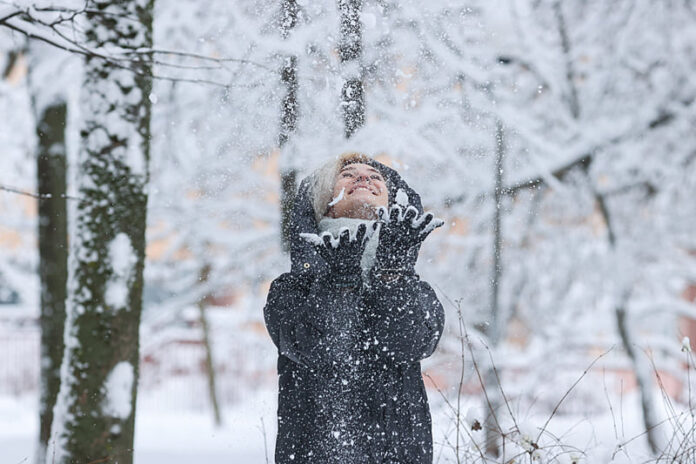Snow is not always romantic for everyone. It can be the cause of anxiety or depression for some people. Those who have a fear of snow are suffering from Chionophobia.
Chionophobia or snow phobia is the intense or extreme fear or dread of snow. In the snowy season, the sufferer avoids going outside.
People with Chionophobia are in great trouble throughout the winter, especially those living in northern areas where heavy snowfall occurs. They have to consolidate themselves inside the home.
In light snow, they feel like they are stuck in a snowstorm.
In this article, we will discuss the condition Chionophobic has to suffer. What are the symptoms and causes of it? How does a person cope with it?
What is Chionophobia?
Chionophobia is an intense and irrational fear of snow or blizzards. Chinophobia is a combination of two words Chiono means snow, and phobia means fear. Chionophobia belongs to phagophobia, the fear of frost or ice.
The fear of snow is so intense that people refuse to draw curtains when there is snow outside.
People with Chionophobia may experience the following symptoms: anxiety, panic attacks, sweating, trembling, shortness of breath, and avoidance of snowy or wintry environments.
The fear of snow may be triggered by past traumatic experiences, such as being trapped or lost in a blizzard, or it may be based on irrational beliefs about the dangers of snow.
Treatment for Chionophobia may involve therapy, medication, and exposure therapy. It helps the sufferer gradually confront and overcome their fear.
Symptoms of Snow Fear
Like other phobias, the symptoms of Chionophobia greatly affect the quality of life of a person. The person could show generalized phobia symptoms, such as panic attacks and anxiety while facing the thing he is phobic with.
Fearing snow brings with it a list of other symptoms through which you can identify the individual these signs are:
- Crying, screaming, tremors, and wanting to run away from the snow.
- Nausea or vomiting when staying in snow for long
- Shortness of breath and heart palpitation
- Panic attacks and severe anxiety
- Muscles tension, weird stomach upset
- Shakiness and sweating in the palm and feet
- Depression and anxiety when talking about snow
Causes of Chionophobia
There are several factors that may cause fear of snow. These factors include environment, genetics, heredity, and past history.
The most common cause is the past traumatic event related to snow. Someone who survived hard in the heavy snowy weather conditions may develop Chionophobia. If a child is injured due to ice or snow, they may develop a snow phobia that may persist lifelong. A person who has seen any fatal event due to freezing low temperatures may develop this phobia.
Media can also be the cause of snow phobia. For instance, if a person watches an event on the TV or media of a snowstorm in which many people got killed, he may develop a snow phobia.
The genetic constitution and the environmental factors collectively result in this disorder. Water phobia may sometimes lead to Chionophobia because ice is also a form of water.
Treatment of Fear of Snow
If your phobia is mild, you can cope with it by exposing yourself to it. How early you can cope with it depends on the intensity of the fear.
Learning more about the nature of phobias and how they develop can help you better understand your fear of snow. Understanding the physiological and psychological mechanisms that contribute to phobias can also help you control your anxiety.
Negative thoughts and beliefs about snow and winter weather can contribute to Chionophobia, so you can remove those negative thoughts by gradual exposure.
You can start with small exposures, such as looking at pictures of snow or watching the snowfall from inside, and gradually increase your exposure as you feel more comfortable.
If the fear is so intense that you can not handle it on your own, seek treatment.
The treatment of Chionophobia involves cognitive behavioral therapy (talk therapy), exposure therapy, or sometimes anti-anxiety medications are suggested.
In CBT, the therapist helps the client change their false perception of snow. CBT is the most effective form of treatment as it not only teaches the patient to cope with Chinophobia, but the person also learns other coping skills.
The bottom line
Chionophobia is an excessive or irrational fear of snow or blizzards. It can cause severe anxiety when exposed to snow and interfere with daily activities.
Treatment options for Chionophobia include therapy, medications, and self-help techniques, such as relaxation and gradual exposure.
Coping strategies can also be helpful in managing the fear of snow, such as seeking support, challenging negative thoughts, and educating oneself.
With proper treatment and support, it is possible to overcome Chionophobia and live a fulfilling life free from the limitations imposed by this fear.
Read Also
- How to Find a 5-Star Dentist Near YouChoosing a dentist is more than just finding someone who can clean your teeth. It’s about selecting a trusted partner in your long-term oral health. A 5-star dentist not only provides excellent clinical care but also delivers a positive patient experience, from the moment you walk in until the moment you leave. Whether you’re new… Read more: How to Find a 5-Star Dentist Near You
- Your Easy-Peasy Guide to Brewing Amazing MatchaHey there! So, you’ve heard all the buzz about matcha – that vibrant green powder that’s not just pretty but packed with good stuff? It can seem a little fancy and intimidating at first, but trust me, making a delicious cup at home is simpler than you think. Forget complicated ceremonies for now; let’s just… Read more: Your Easy-Peasy Guide to Brewing Amazing Matcha
- Embracing Holistic Wellness: Insights from a Lansing, MI Health CenterReframing Health: Moving Beyond Symptom Management Treating only symptoms often offers quick relief, yet long-term results stay out of reach. When care zeroes in on isolated complaints, the bigger picture, such as stress, behavior, or lifestyle, often gets missed. Research shows that whole-person care, which looks at physical, emotional, and environmental factors, yields better outcomes… Read more: Embracing Holistic Wellness: Insights from a Lansing, MI Health Center
- VO₂ Max Testing Explained: What It Is & Why It Matters for Your HealthVO₂ max sounds like a term reserved for elite athletes, but it’s among the most accurate measures of your lifetime and general condition. Moreover, it goes beyond performance. Monitoring your VO₂ max will help you to ascertain your body’s capacity to control stress, its oxygen consumption efficiency, and your internal ageing process. If you have… Read more: VO₂ Max Testing Explained: What It Is & Why It Matters for Your Health
- So, what exactly is matcha?Think of matcha as green tea turned up to eleven! Instead of steeping leaves and tossing them out, matcha is made by grinding whole green tea leaves into this super-fine, vibrant green powder. You whisk it right into hot water (or milk!), meaning you’re drinking the entire leaf. That’s why folks say you get way… Read more: So, what exactly is matcha?
- How to Tell When It’s Time for Professional Senior Care SupportCaring for an aging loved one is a journey filled with love, patience, and difficult decisions. One of the toughest choices families face is knowing when it’s time to seek extra help. In this article, trusted Los Angeles caregivers for seniors explore the signs that it might be time to bring in professional support, not… Read more: How to Tell When It’s Time for Professional Senior Care Support







